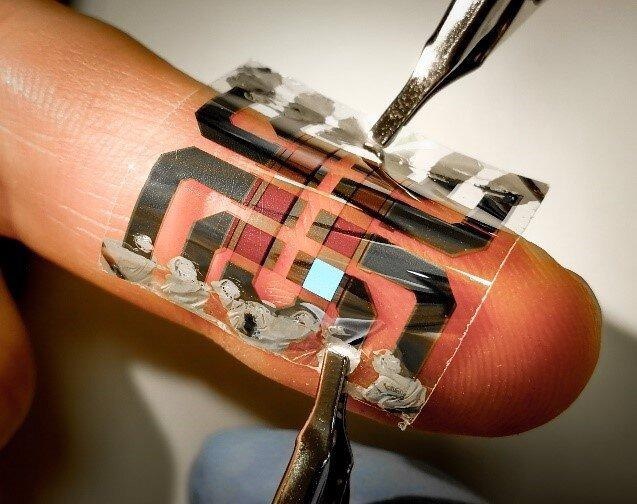Dec 8 2020
At the University of St Andrews, a research team has devised a new technique to make the thinnest, most durable, and lightweight light source thus far, which could transform the future of mobile technologies and enable new advances in brain science.
 Flexible, ultra-lightweight, and highly durable organic LEDs promise new forms of wearable displays. Image Credit: University of St Andrews.
Flexible, ultra-lightweight, and highly durable organic LEDs promise new forms of wearable displays. Image Credit: University of St Andrews.
Led by the School of Physics and Astronomy at the University of St Andrews, the new study into the advancement of organic LEDs could not just be applicable for the future designs of mobile phones and tablets but could also have a crucial role in neuroscience research and clinical technologies that help patients suffering from neurological diseases.
The study has been described in two separate papers published in Nature Communications on Monday, December 7th, 2020.
The researchers used a combination of organic electroluminescent molecules, metal oxide and biocompatible polymer protection layers to make organic LEDs as flexible and thin as the day-to-day cling film used at home.
The newly developed light sources could be applied to future digital displays and can be used to create thinner and lighter displays for phones and tablets—displays that look big but that can be rolled up or folded when not in use.
The new LEDs could also be applied, in the long run, to treatments for neurological diseases that involve deploying light-gated proteins to modulate the activity of brain in patients.
Previous attempts to create ultra-thin organic LEDs were hampered by their poor stability in air and moist environments. By contrast, it was found that the new LEDs are very sturdy, with tests revealing they can thrive underwater for several weeks and endure exposure to gas plasmas and solvents.
Moreover, the new LEDs can be bent around the edge of a razor blade several thousand times and still work flawless—a simple experiment that demonstrates their very high durability.
The mechanical flexibility, sturdiness, and extreme form factor of the new LEDs paves the way for several possibilities for future use and applications apart from mobile technologies. For example, they could be combined into clothing, packaging, and work surfaces as self-emissive indicators without increasing the weight and volume of the product.
Moreover, the stability of the new LEDs under high humidity and in water renders them more suitable for wearable applications that require skin-contact and for application as implants in biomedical research.
Our organic LEDs are very well suited to become new tools in biomedical and neuroscience research and may well find their way into the clinic in the future.
Malte Gather, Lead Scientist of the Studies and Professor, School of Physics and Astronomy, University of St Andrews
The researchers collaborated with Dr Stefan Pulver from the School of Psychology and Neuroscience in a separate study, where they used light from an array of miniature organic LEDs and a neuroscience technique termed optogenetics to induce the locomotion of fly larvae in a highly controlled fashion.
The delivery of light to particular body segments of crawling fly larvae enabled the team to reliably activate and silence sensory neurons. Based on when and in what position light was delivered, the larvae crawled forward or backward, where the crawling speed and other aspects of animal movement were controlled by the dynamics of light stimulation.
While the precise neuronal mechanism behind the animal response remains unknown, we are now in a much better position to test a range of hypotheses related to the locomotion of these organisms.
Dr Caroline Murawski, First Author of the Second Study, School of Physics and Astronomy, University of St Andrews
At present, the team is combining its advancement in creating robust, light, and flexible organic LEDs with what they have understood about manipulating neural activity in flies to develop light sources for implantation into the brain of vertebrate organisms. This will enable scientists to investigate brain function in a more versatile and less invasive way compared to prevailing methods.
Besides enabling future development of mobile displays and paving new ways for basic studies, the technologies developed in these studies could eventually be applied to enhance clinical treatments by developing optical interfaces that transmit information directly to the brain of patients suffering from loss of vision, sense of touch, or hearing.
Journal Reference:
Murawski, C., et al. (2020) Segment-specific optogenetic stimulation in Drosophila melanogaster with linear arrays of organic light-emitting diodes. Nature Communications. doi.org/10.1038/s41467-020-20013-6.